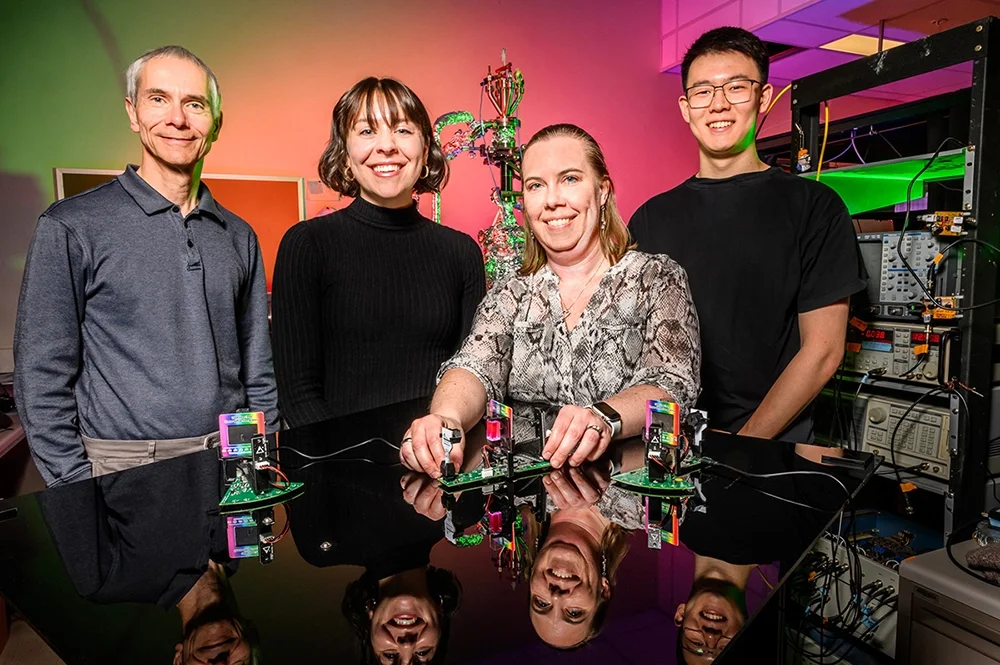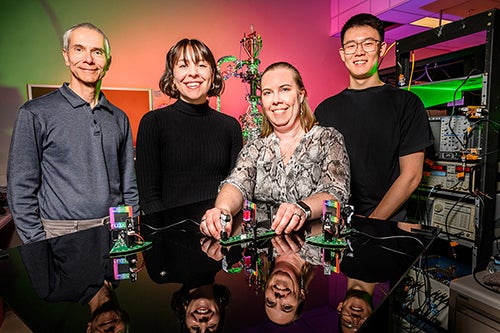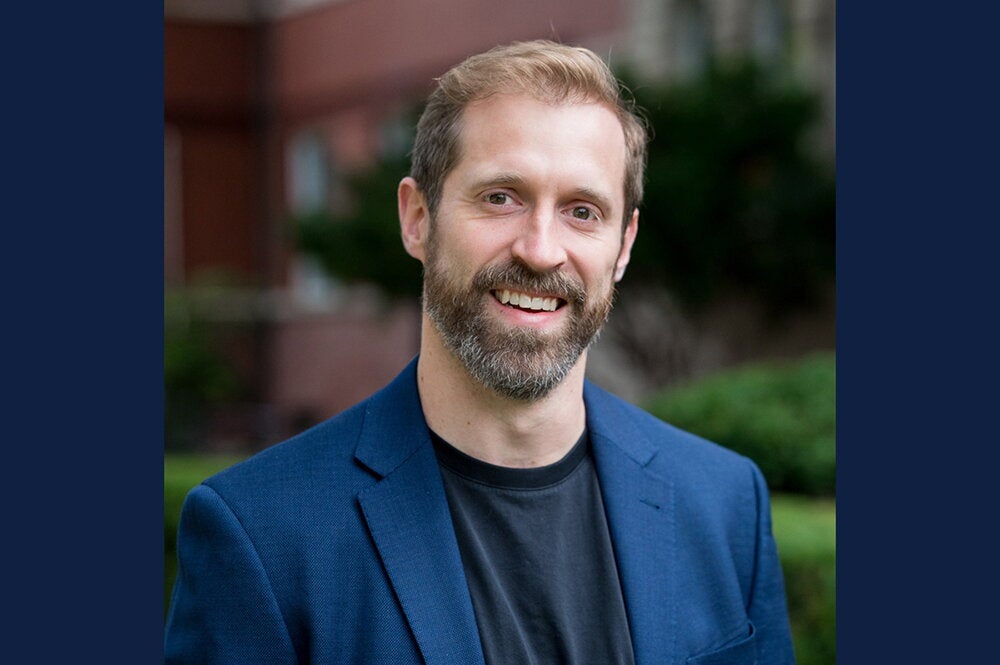

A team of scientists at the University of Illinois Urbana-Champaign, Rice University, and Danville Area Community College has created an affordable laboratory curriculum for teaching advanced data analysis techniques and instrument building to first-year general chemistry students.
Students in the course at DACC get a first-hand look at the inside of a spectrometer by building a simple one from a kit and discover how they can use programming and data science techniques to extract hidden information from chemical measurements, the scientists say.
“Physical chemistry is not something that’s usually introduced in community college settings,” said Alison Wallum, a graduate student at the U of I, and the primary designer of the curriculum. “We wanted to figure out a way to get students excited about physical chemistry concepts early on without making them unnecessarily complex.”
Wallum is the first author of the group’s paper, published in the Journal of Chemical Education, and the group is making the teaching materials available on GitHub for educators anywhere who want to use them.
Co-author Amberle Browne and Amy Nicely, both chemistry professors at DACC, teach the lab as part of the college’s first-semester general chemistry course – taken by equal proportions of students majoring in health professions, engineering and other sciences – and pilot-tested it during the Spring and Fall semesters 2022.
They said their students really enjoy assembling the spectrometer, and although the lab is challenging, it significantly enhances their learning.
“Physically building the instrument is much more useful than reading the theory and gives them a much better understanding of how it works,” Browne said. “It’s a good level of challenge, and they are entering Chemistry 102 with significantly better skills than before.”
Working in small groups, students assemble a simple Raspberry Pi-based absorption spectrometer and test it by collecting data on known food dyes contained in a set of colorful mixtures. Using a spreadsheet, they transfer their data to Jupyter notebooks containing pre-written computer code to perform the data analysis on solutions containing unknown proportions of dyes.
The team that developed the curriculum is affiliated with the Center for Adopting Flaws as Features, a multi-university initiative funded by the National Science Foundation. CAFF’s goals include increasing diversity among those entering science fields through outreach with community colleges, and creating affordable, modular instrumentation for instructional purposes.
Christy Landes, a professor of chemistry, of electrical and computer engineering, and of chemical and biomolecular engineering at Rice University, leads the initiative. CAFF paid the costs of the spectrometer kits at about $250 each.
“The equipment and the computational technology to do simple experiments have become practically free,” Landes said. “Some of the components in this spectrometer can be purchased for tens of dollars online, and you can assemble one for teaching purposes for practically nothing.”
Designed to be taught in three weekly lab sessions that total four to six hours, the curriculum can be integrated into existing chemistry courses. In an optional fourth session, student groups deliver presentations on the applications of spectroscopy or a related field.
“It was definitely challenging coming up with a lab and implementing it,” Wallum said.
“Rather than focus on one topic related to physical chemistry, we first sat down and thought about some of the big-picture things we typically do as chemists.”
They decided to include instrument building “because a lot of the time we’re designing new instruments to do experiments that may not be available commercially,” Wallum said. “We also wanted students to get hands-on experience collecting data and learning how to adjust their instruments to capture the best data possible.”
Although many students have little experience with computer code or computational tools, most can perform the analysis correctly with step-by-step instructions, the researchers said.
“Anyone can easily execute the Python code, and although it is prewritten for them, the students get a chance to see it and the accompanying comments,” Nicely said. “Everyone benefits from seeing an interdisciplinary connection between chemistry and computer science.”
By making the guided activities, instructor guide, detailed instructions and lecture slides accessible on the course’s GitHub, the team hopes that teachers who use them will expand the online repository by uploading their own adaptations and sharing their experiences.
“If you want to teach students to do something new, you must show their instructors how to teach it. That’s really important,” said Martin Gruebele, the James R. Eiszner Endowed Chair in Chemistry at the U of I. He also holds an appointment in physics and is affiliated with the Beckman Institute for Advanced Science and Technology and the Carle Illinois College of Medicine, among other campus units.
A team at Rice University has adapted the curriculum to teach a different topic at a Houston preparatory high school for disadvantaged students, and colleagues at the University of Wisconsin affiliated with CAFF are adapting it for lessons on dye kinetics.
“We really want to demonstrate that it’s possible to do a much better job teaching students and make the science broadly accessible … so we can train a new generation of students to better understand how to use data science, which is going to be crucial for any job in technology in the future,” Landes said.
Exposing students to complex topics such as physical chemistry and data analytics as early as possible helps mitigate their trepidation and instills confidence in their ability to tackle increasingly difficult material in upper-division courses, Gruebele said, and he urged teachers not to underestimate their students’ or their own abilities to successfully navigate the curriculum.
“My word is to all the instructors out there is if you’re thinking, man, that would be nice to do something like that, but this is just too hard – get over it. Do it,” Gruebele said.
“It may seem a bit scary and new, and it will be somewhat difficult at the beginning, but it’s really going to be worth it in the long term and make things more exciting for you and for your students,” he said. “Students can do all kinds of things that you would never believe they could do if you confront them in a knowledgeable, caring way.”
Additional co-authors of the paper were research scientist Lawrence Tauzin, postdoctoral student Subjojyoti Chatterjee and assessment director Christopher D. Barr, all of Rice University; and U of I undergraduate students Zetai Liu and Joy Lee.


